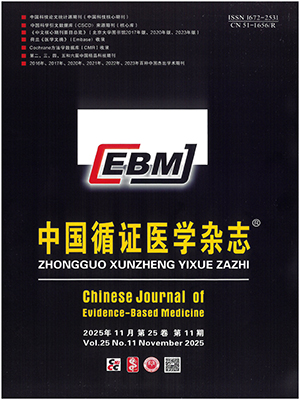| 1. |
韓鋒, 隋福民. 因果推斷中平均處理效應的估計研究. 數理統計與管理, 2015, 34(3): 427-433.
|
| 2. |
Rosenbaum PR, Rubin DB. The central role of the propensity score in observational studies for causal effects. Biometrika, 1983, 70(1): 41-55.
|
| 3. |
王永吉, 蔡宏偉, 夏結來, 等. 傾向指數 第一講 傾向指數的基本概念和研究步驟. 中華流行病學雜志, 2010, 31(3): 347-348.
|
| 4. |
吳美京, 吳騁, 王睿, 等. 傾向性評分法中評分值的估計方法及比較. 中國衛生統計, 2013, 30(3): 440-444.
|
| 5. |
王永吉, 蔡宏偉, 夏結來, 等. 傾向指數 第二講 傾向指數常用研究方法. 中華流行病學雜志, 2010, 31(5): 584-5.
|
| 6. |
李智文, 劉建蒙, 任愛國. 基于個體的標準化法——傾向評分加權. 中華流行病學雜志, 2010, 31(2): 223-226.
|
| 7. |
Li F, Morgan KL, Zaslavsky AM. Balancing covariates via propensity score weighting. J Am Stat Assoc, 2018, 113(521): 390-400.
|
| 8. |
Crump RK, Hotz VJ, Imbens GW, et al. Dealing with limited overlap in estimation of average treatment effects. Biometrika, 2009, 96(1): 187-99.
|
| 9. |
Desai RJ, Franklin JM. Alternative approaches for confounding adjustment in observational studies using weighting based on the propensity score: a primer for practitioners. BMJ, 2019, 367: l5657.
|
| 10. |
Mlcoch T, Hrnciarova T, Tuzil J, et al. Propensity score weighting using overlap weights: a new method applied to regorafenib clinical data and a cost-effectiveness analysis. Value Health, 2019, 22(12): 1370-1377.
|
| 11. |
秦宇辰, 郭威, 阮一鳴, 等. 重疊加權法在醫學研究混雜因素控制中的應用. 中國衛生統計, 2020, 37(3): 363-366.
|
| 12. |
Austin PC. The relative ability of different propensity score methods to balance measured covariates between treated and untreated subjects in observational studies. Med Decis Making, 2009, 29(6): 661-677.
|
| 13. |
Schober P, Mascha EJ, Vetter TR. Statistics from A (agreement) to Z (z score): a guide to interpreting common measures of association, agreement, diagnostic accuracy, effect size, heterogeneity, and reliability in medical research. Anesth Analg, 2021, 133(6): 1633-1641.
|
| 14. |
Zhang Z, Kim HJ, Lonjon G, et al. Balance diagnostics after propensity score matching. Ann Transl Med, 2019, 7(1): 16.
|
| 15. |
王永吉, 蔡宏偉, 夏結來, 等. 傾向指數 第三講 應用中的關鍵問題. 中華流行病學雜志, 2010, 31(7): 823-825.
|
| 16. |
胡克震. Kolmogorov—Smirnov檢驗法的應用. 中國衛生統計, 1985, (3): 12-17.
|
| 17. |
McCaffrey DF, Griffin BA, Almirall D, et al. A tutorial on propensity score estimation for multiple treatments using generalized boosted models. Stat Med, 2013, 32(19): 3388-3414.
|
| 18. |
McCaffrey DF, Ridgeway G, Morral AR. Propensity score estimation with boosted regression for evaluating causal effects in observational studies. Psychol Methods, 2004, 9(4): 403-425.
|
| 19. |
金勇進, 張喆. 抽樣調查中的權數問題研究. 統計研究, 2014, 31(9): 79-84.
|
| 20. |
Kereiakes DJ, Obenchain RL, Barber BL, et al. Abciximab provides cost-effective survival advantage in high-volume interventional practice. Am Heart J, 2000, 140(4): 603-610.
|
| 21. |
Mao H and Li L. PSW: propensity score weighting methods for dichotomous treatments. R package version 1.1-3. Avaiable at: https://CRAN.R-project.org/package=PSW.
|
| 22. |
Zhou T, Tong G, Li F, et al. PSweight: propensity score weighting for causal inference with observational studies and randomized trials. R package version 1.1. 5. Avaiable at: https://CRAN.R-project.org/package=PSweight.
|
| 23. |
Cefalu M, Ridgeway G, McCaffrey D, et al. (2021). twang: toolkit for weighting and analysis of nonequivalent groups. R package version 2.5. Avaiable at: https://CRAN.R-project.org/package=twang.
|
| 24. |
Ridgeway G, Mccaffrey D, Morral A, et al. Toolkit for weighting and analysis of nonequivalent groups: a guide to the twang package. Avaiable at: https://cran.r-project.org/web/packages/twang/vignettes/twang.pdf.
|
| 25. |
David H. hrIPW: hazard ratio estimation using Cox model weighted by the estimated propensity score. R package version 0.1. 3. Avaiable at: https://CRAN.R-project.org/package=hrIPW.
|




